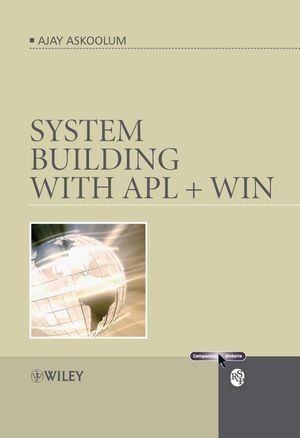Read more
Informationen zum Autor Ajay Askoolum works for Claybrook Computing Ltd. In Surrey. Having obtained an MSc in Economics, he has worked in the pensions software sector of the UK insurance industry and has over 20 years' experience using APL andn has authored a number of journal articles on the topic. Klappentext Software modernisation or re-engineering as a concept lacks universal clarity. System Building with APL + Win seeks to clarify this problem by identifying the solution to the long term survival of the APL application as the elimination of APL specific considerations in the choice of a development tool. The author shows how to deploy mainstream industry standard system components within an APL + Win development environment, enabling the APL application to be just like any application on the Windows platform.* Demonstrates the power and agility of APL + Win in today's approach to system building* Features a 'code intensive' approach, which overcomes the lack of APL+Win specific documentation of system components* Illustrates the potential for multi-language system building from an APL+Win environment* Explains how increasing the collaborative nature of APL will enable it to become an even more valuable tool for application developmentSystem Building with APL + Win provides an excellent resource for system developers and training providers using the software, as well as MS Office users who wish to incorporate it into a bespoke application development. It will also be of interest to users of other APL interpreters.RSP Series in Industrial Control, Computers and Communications Zusammenfassung Software modernisation or re-engineering is an undefined concept that tends to mean different things to different people. This book seeks to clarify the problem by identifying the solution to long term survival of the APL application as the elimination of APL specific considerations in the choice of a development tool. Inhaltsverzeichnis Editorial Foreword . Acknowledgements . Preface . Chapter 1 - System Building Overview . 1.1 Why APL? 1.2 Which APL? 1.3 The n-tier model. 1.4 Prevailing design architecture. 1.5 APL interface to components. 1.6 Structured Query Language (SQL). 1.7 The Windows Registry. 1.8 Regional settings. 1.9 Software development. 1.10 APL and Windows API. 1.11 The future challenge. Chapter 2 - Advanced APL Techniques . 2.1 Removing legacy code clutter. 2.2 Bit-wise Boolean techniques. 2.3 Managing workspace variables. 2.4 Generating test data. 2.5 APL+Win as an ActiveX Server. 2.6 Debugging applications. 2.7 Functions with methods. Chapter 3 - Application Interface . 3.1 Managing the hidden interface. 3.2 The user interface. 3.3 The user interface is the application. 3.4 APL+Win design safeguards. 3.5 Context sensitive help. 3.6 Help format as a user option. 3.7 Application messages. 3.8 User-defined properties of the system object. 3.9 The scope of user documentation. 3.10 Designing menus. 3.11 Designing forms. 3.12 Access control. 3.13 Empower the user. 3.14 Sales considerations. 3.15 Application exit. Chapter 4 - Working with Windows . 4.1 The APL legacy. 4.2 Windows resources. 4.3 API calls. 4.4 The Windows Script Host (WSH). 4.5 Creating a shortcut. 4.6 Intelligent file operations with API calls. 4.7 Universal Naming Convention (UNC). 4.8 Application configuration. 4.9 Using INI files with APL. 4.10 XML files for application configuration. 4.11 INI/XML comparative advantage. 4.12 The filing system. 4.13 Platform enhancements. Chapte...

